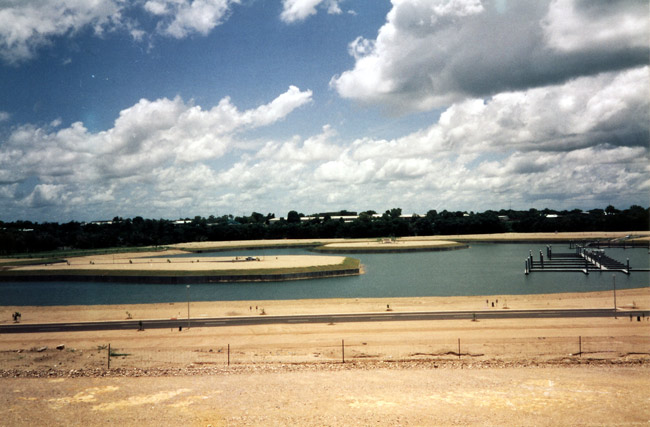If You Sell and Buy Another Home in Florida Do You Pay the Impact Fee Again in Manatee County

Impact fees are a one-time tax imposed on all new residential and commercial construction by local governments to defray the cost of growth's "impact" on vital services such as schools, parks, roads, ambulance and fire service and other infrastructure needs.

The rationale behind impact fees is this: new construction means new residents. New residents increase the burden on local services—roads, parks, fire and rescue, schools, water and sewer hook-ups. To pay for that "impact," governments impose impact fees. So anyone building a new home or a new business pays a park impact fee, a school impact fee, and so on. Impact fees are especially prevalent in Florida, Texas and other low-tax states where the tax structure doesn't provide enough revenue through other sources to pay for growth. Florida pioneered the use of impact fees in the late 1970s.
Impact fees are generally accepted except by developers and some real estate professionals, who call impact fees a "hidden tax" that slows or discourages growth by pricing people out of homes: if the price of a home is $10,000 or $15,000 greater than it would be without impact fees, some homeowners who might otherwise have been able to afford a house consequently would not.
Impact fees are taxes. They are hidden only in so far as they fall into a large category of "fees" that local governments impose that are indistinguishable from taxes. Semantics aside, they're not quite hidden: Governments clearly advertise them and, iof course, impose them at the time of construction.
The evidence, however, is strongly against the argument that impact fees either slow or discourage growth: Florida's highest-growth decades followed the imposition of impact fees in the late 1970s. And Flagler County led the nation as the fastest-growing county for several years during the middle of the 2000s despite relatively steep impact fees.
Impact fees may well spur growth and increase home values: while it's true that impact fees will add to the cost of a house, and that cost will be passed on to home-owners, the higher value of the new house will also improve the values of existing, neighboring homes. In that sense, impact fees raise the value of homes. Existing residents who have presumably paid their impact fee will also be appreciative of a government that keeps their other taxes relatively low, while generating revenue through one-time impact fees on new residents and businesses.
Absent alternative means of paying for growth, the absence of impact fees would artificially lower the price of new construction by shifting the burden of growth's cost onto existing homes or creating considerable deficits between the impact of growth and available services, thus lowering the quality of life–and with it, home values and the attractiveness of a locality, which would potentially hurt further construction and home-ownership.
Local governments are not allowed to spend revenue from impact fees on anything other than what the fees are slated for. For example, in 2012, the Flagler County School Board was collecting about $500,000 worth of impact fees per year. It had collected about $3.5 million since finishing to pay for its last new school. That $3.5 million was sitting in an escrow account, untouchable until the district has the need for a new school (what it calls new student stations). That could be a few years: in 2012, the district's population was flat, and its school buildings were only at 75 percent capacity. Builders and developers argued that the district should stop collecting the fee. The school district argued that growth will return, and a new school would be needed, making the continuing collection of money necessary.
But none of the money in the impact fee escrow account may be used, meanwhile, for other needs. That goes for other governments' various impact fee funds.
Impact fees vary depending on where the fees are imposed. The amounts vary by government. But for a single-family house in Flagler County, the school impact fee is the same throughout, at $3,600. The transportation impact fee is $2,827 in Palm Coast, but $1,438 in the county and in Bunnell. Palm Coast has the highest total impact fees, at $15,270–though again, those fees did not discourage home-builders from over-building in Palm Coast, and making the city one of the nation's ground zeros in the housing bust.
Below is a general schedule of impact fees in Flagler County, followed by the current, detailed schedule of impact fees in Palm Coast.
![]()
2012 Impact Fees for a Single Family House in Flagler County, Bunnell, Flagler Beach and Palm Coast
| Flagler County School Board | Schools | $3,600 |
|---|---|---|
| Bunnell | Water | $1,800 |
| Sewer | $1,800 | |
| Transportation | $1,438.10* | |
| Schools | $3,600 | |
| Total Impact Fees in Bunnell: | $8,638.10 | |
| Flagler Beach | Water | $1,891.60 |
| Sewer | $2,733.20 | |
| Transportation | $1,438.10* | |
| Parks and Recreation | $268.45* | |
| Schools | $3,600 | |
| Total Impact Fees in Flagler Beach: | $9,931.35 | |
| Flagler County | Transportation | $1,438.10* |
| Parks and Recreation | $268.45* | |
| Schools | $3,600 | |
| Total Impact Fees in Flagler County: | $5,306.55 | |
| Palm Coast | Parks and Recreation | $1,208 |
| Fire and Rescue | $189.75 | |
| Transportation | $2,827.56 | |
| Water | $2,430 | |
| Sewer | $2,480 | |
| Water and Sewer Required Hookup Charge | $2,535 | |
| Schools | $3,600 | |
| Total Impact Fees in Palm Coast: | $15,270.98 |
(*) The Flagler County Commission on Oct. 1, 2012, suspended the transportation and park impact fees for two years.
![]()
Palm Coast Impact Fees, 2012
Source: https://flaglerlive.com/44763/impact-fees-faq/


0 Response to "If You Sell and Buy Another Home in Florida Do You Pay the Impact Fee Again in Manatee County"
Post a Comment